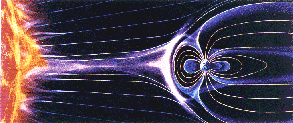This is an artist's rendering of solar wind coming towards the Earth and its magnetosphere.
Click on image for full size
NASA.
Solar Wind
The Sun is flinging 1 million tons of matter out into space every second! We call this material
solar wind. Once the solar wind is blown into space, the particles travel at supersonic speeds of 200-800 km/sec! These particles travel all the way past Pluto and do not slow down until they reach the
termination shock within the heliosphere. The Heliosphere is the entire region of space influenced by the Sun.
The solar wind plasma is very thin. Near the Earth, the plasma is only about 6 particles per cubic centimeter. So, even though the wind travels SUPER fast, it wouldn't even ruffle your hair if you were to stand in it because it's so thin! But, it is responsible for such unusual things as:
The particles of the solar wind, and the Sun's magnetic field (IMF) are stuck together, therefore the solar wind carries the IMF (interplanetary magnetic field) with it into space.
Instruments like SWICS and SWOOPS onboard the Ulysses probe are studying solar wind. They are hoping to make a 3-D map of solar wind characteristics throughout the heliosphere.
You might also be interested in:
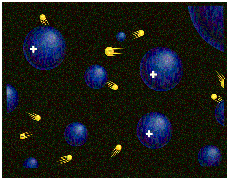
Plasma is known as the fourth state of matter. The other three states are solid, liquid and gas.In most cases, matter on Earth has electrons that orbit around the atom's nucleus. The negatively charged
...more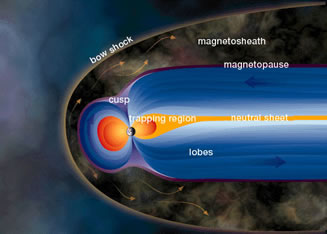
A magnetosphere has many parts, such as the bow shock, magnetosheath, magnetotail, plasmasheet, lobes, plasmasphere, radiation belts and many electric currents. It is composed of charged particles and
...more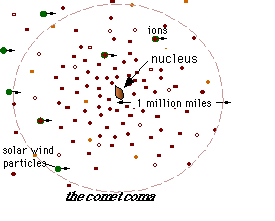
As the ices of the comet nucleus evaporate, they expand rapidly into a large cloud around the central part of the comet. This cloud, called the coma, is the atmosphere of the comet and can extend for millions
...more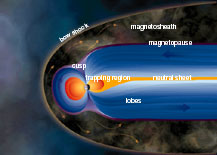
The Earth has a magnetic field with north and south poles. The Earth's magnetic field reaches 36,000 miles into space. The magnetic field of the Earth is surrounded in a region called the magnetosphere.
...more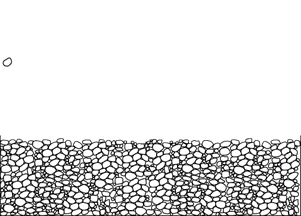
People used to think that moons such as the Earth's moon or the moons of Jupiter had no atmosphere whatsoever. Now, however, measurements have shown that most of these moons are surrounded by a *very*
...more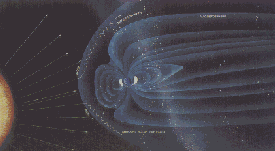
Unlike the Earth, which has a protective shield around it called the magnetosphere, the surface of the moon is not protected from the solar wind. This picture shows the magnetosphere surrounding the Earth,
...more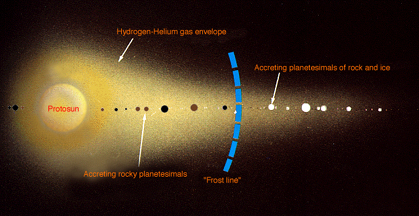
Scientists ask many questions. One of the questions they like to ask is "Where did the atmosphere come from?" As always, scientists chip in with many different, and sometimes conflicting answers. Some
...more


